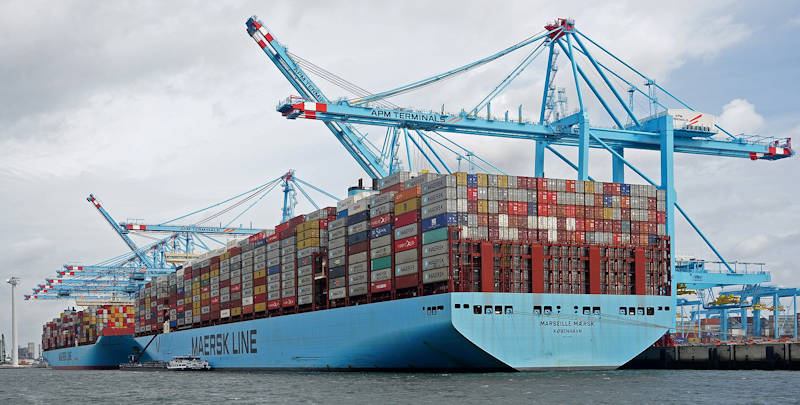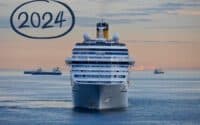Navigating Efficiency: The Dual Impact of Optimal Ballast and Reduced Idling

In the vast world of maritime operations, the nuances of efficiency dictate the thin line between profitability and unsustainable costs. Ships, the titans of the seas, are intricate machines where every operational aspect has an impact on the bottom line. Two often-underestimated facets of this efficiency matrix are ballast optimization and idling implications. While they might seem secondary to the untrained eye, they hold immense significance in the grander scheme of maritime operations. Let’s take a sample scenario.
* Please send feedback/suggestions to editor @ shipuniverse.com
Assumptions:
- The ship has a daily fuel consumption of 5 tons/day while idling (as discussed previously).
- Fuel cost: $400/ton (this is a ballpark figure and may vary).
- The ship idles for 100 days in a year under normal conditions.
- By optimizing operations, the ship can reduce its idling time by 20% (20 days).
- Optimal ballast can provide an additional 10% fuel savings during idle periods.
Fuel Savings from Reduced Idling:
Original idling fuel consumption: = 100 days × 5 tons/day = 500 tons/year
After a 20% reduction in idling days: = 80 days × 5 tons/day = 400 tons/year
Fuel savings: = 500 tons – 400 tons = 100 tons/year
Fuel Savings from Optimal Ballast:
Considering the remaining 80 idling days, the 10% fuel savings from optimal ballast would be: = 10% of 400 tons = 40 tons/year
Total Fuel Savings:
= Savings from reduced idling + savings from optimal ballast = 100 tons + 40 tons = 140 tons/year
Financial Savings:
= 140 tons × $400/ton = $56,000/year
Conclusion: By reducing idling by 20% and optimizing ballast for an additional 10% fuel savings during idle periods, a ship could potentially save 140 tons of fuel annually, translating to financial savings of $56,000 at the given fuel price.
Note: These are rough estimates and will vary depending on the specific conditions, ship type, operational practices, and fuel prices.
The Science and Significance of Ballast
For many, the term “ballast” evokes images of archaic sailing ships laden with stones or sand, ensuring they remain upright amidst tumultuous seas. In essence, ballast is weight added to a ship, ensuring stability and counteracting the forces of loaded cargo or fuel shifts. Historically, ballast was as simple as rocks or water, but its role has remained consistent: ensuring a ship’s safety and optimal performance.
However, it’s not just about stability. The amount and distribution of ballast have a direct correlation with a ship’s fuel efficiency. Improper ballast can increase drag, leading to higher fuel consumption. It’s an equation where the optimal weight distribution equates to fewer dollars spent on fuel and, consequently, reduced environmental impact.
This brings us to the modern era—an age where technology merges with age-old maritime practices. Today, ballast optimization isn’t about intuition; it’s about precision. Advanced sensor systems, predictive algorithms, and data analytics ensure that ships maintain the perfect balance, maximizing fuel efficiency without compromising on safety.
Reduced Idling: More Than Just Fuel Savings
When large vessels dock at ports, there’s an inevitable period where they remain stationary, with engines running and systems active, even though they’re not cruising the open sea. This is referred to as idling. The sheer amount of time ships spend idling at ports is often surprising, with several hours or even days passing before cargo is fully loaded or unloaded, and all customs processes are completed.
But why is this significant? On the surface, it might seem like a mere waiting game. However, the implications run deep. Prolonged idling leads to the continuous burning of fuel, even though the ship isn’t covering any distance. This not only constitutes a sheer waste of resources but also contributes significantly to environmental pollution. The emissions from a stationary ship might seem trivial in the short term, but cumulatively, they can have profound environmental impacts, contributing to air pollution and the broader challenges of climate change.
Moreover, there’s an undeniable economic aspect to this. Fuel isn’t cheap, and every hour a ship spends idling translates to substantial financial costs. Over time, these expenses accumulate, making operations less profitable. The idling time also represents potential productivity lost, where the vessel could be out on another mission, transporting goods, and generating revenue.
- Assume a cargo ship is idling for a full day:
- Fuel consumption while idling: 5 tons/day
- If it idles for 10 days:
- 5 tons/day×10 days=50 tons5 tons/day×10 days=50 tons of fuel consumed while idling for 10 days.
Synergy of Both Measures
When considering the big picture of ship operation, it’s clear that optimizing ballast and reducing idling times aren’t isolated measures. Instead, they synergize to create a more holistic approach to maritime efficiency.
By ensuring optimal ballast, ships can travel at optimal speeds and handle better, allowing them to reach ports faster and potentially reduce idling times. On the other hand, by reducing the idling time, ships can minimize the time spent in port, ensuring that ballast adjustments for the next journey can be made more efficiently.
Real-world applications of this synergy are evident in several modern fleets. For instance, some of the leading shipping companies have incorporated digital systems that provide real-time feedback on ballast levels, helping ships adjust on-the-go and, in tandem, use predictive analytics to anticipate port wait times. This combined strategy not only ensures operational efficiency but also substantially reduces costs and environmental impacts.
Challenges and Considerations
Efficiency in maritime operations, while highly desired, is never without its challenges. When it comes to implementing optimal ballast and reducing idling, ship operators face a myriad of obstacles. One prominent concern is the ever-evolving nature of regulations surrounding ballast water management. These regulations aim to prevent the spread of invasive aquatic species, and complying with them often requires advanced treatment systems, which come with both operational and financial challenges.
Moreover, reducing idling times is not just a matter of instructing ships to hurry up. Ports can be congested, and various logistical issues can prolong loading and unloading times. The unpredictability of customs clearances and inspections further complicate matters.
Safety remains paramount. While optimizing ballast for fuel efficiency is desirable, it must never compromise the ship’s stability. Similarly, rushed procedures to reduce idling might lead to oversights that could compromise safety or result in regulatory violations.
Future Outlook and Technological Advancements
Despite these challenges, the maritime industry is poised at the cusp of a technological revolution. Predictive analytics and artificial intelligence (AI) are already making waves. Advanced algorithms can analyze vast amounts of data in real-time, guiding ships to adjust ballast for the best performance while anticipating port wait times to strategize docking schedules.
Further, as ports themselves become ‘smarter’, equipped with better infrastructure and more automated systems, the dream of significantly reduced idling times is becoming a reality. Investment in infrastructure, from automated cargo handling to streamlined customs procedures, can have a profound effect on minimizing delays.
As we navigate the waters of maritime efficiency, the dual focus on ballast optimization and reduced idling emerges as a beacon of potential. While challenges persist, they are surmountable, especially in light of the technological advancements on the horizon. The maritime industry, with its blend of tradition and innovation, has always risen to meet challenges head-on. In the pursuit of efficiency, it’s clear that optimal ballast and reduced idling are not just operational choices but vital strategies for a sustainable and profitable future.
- International Maritime Organization (IMO): The IMO is the United Nations specialized agency responsible for regulating shipping. Their website contains various publications and data on maritime topics, including fuel consumption and emissions.
- BIMCO: This is one of the largest international shipping associations, representing shipowners, managers, brokers, etc. They offer a lot of insight and research about the shipping industry.
- World Shipping Council: This organization represents the global liner industry, and their website contains valuable resources and data on shipping operations.
- Ship & Bunker: This site provides news, trends, and data on ship fuel, known as bunker. It can give insight into current fuel prices, trends, and related news.
- MarineLink: An industry news portal that covers various maritime topics, including fuel consumption, new technologies, and regulatory changes.

Do you have a Maritime Product or Service that may be of interest to Shipowners? Tell us about it here!
Do you have feedback or insights? Please reach out to editor @ shipuniverse.com



